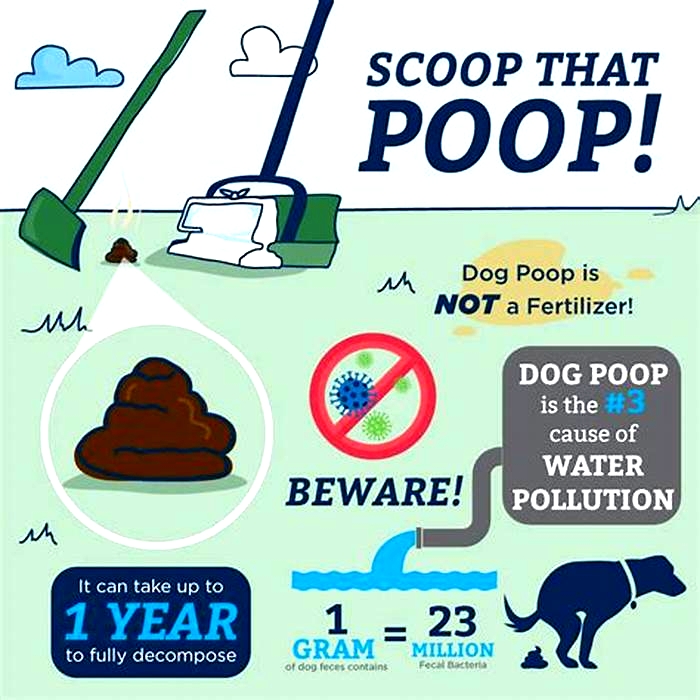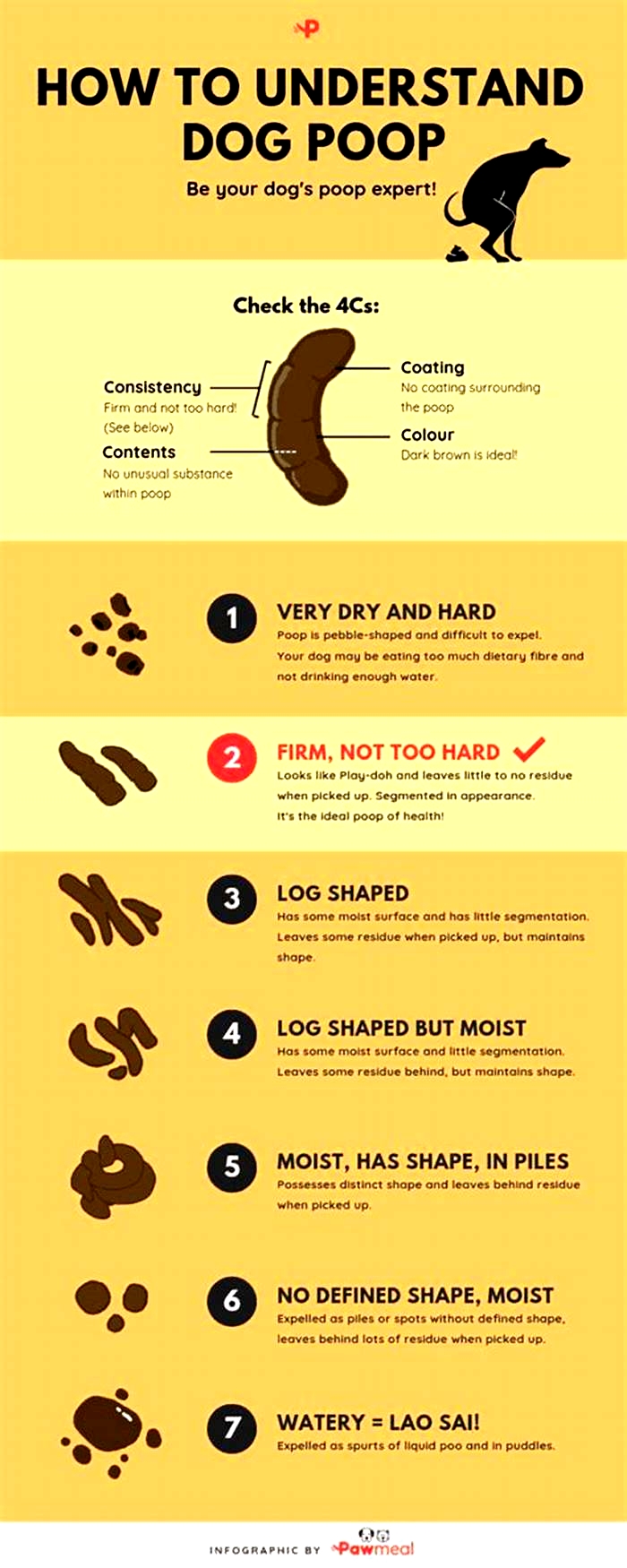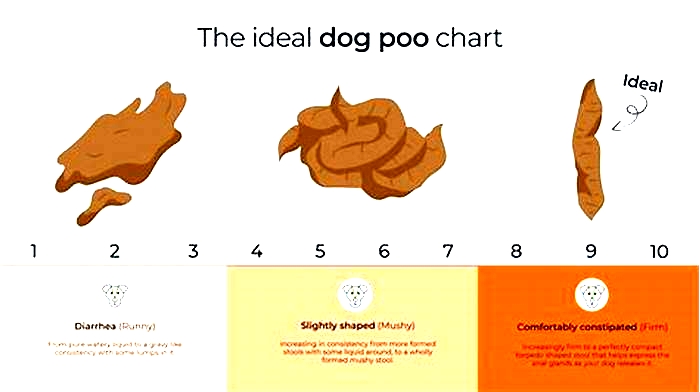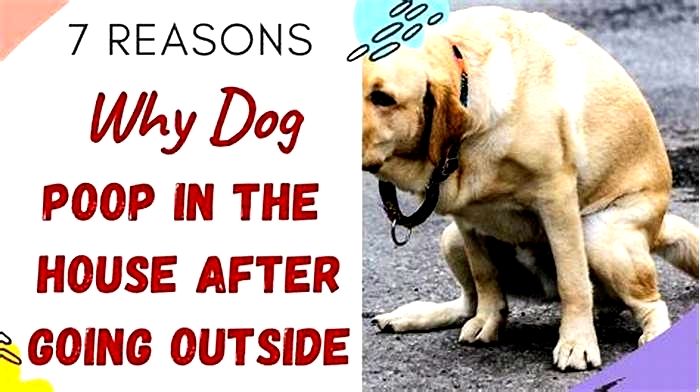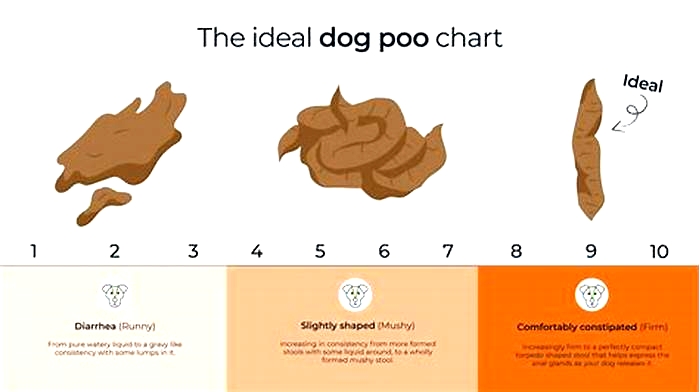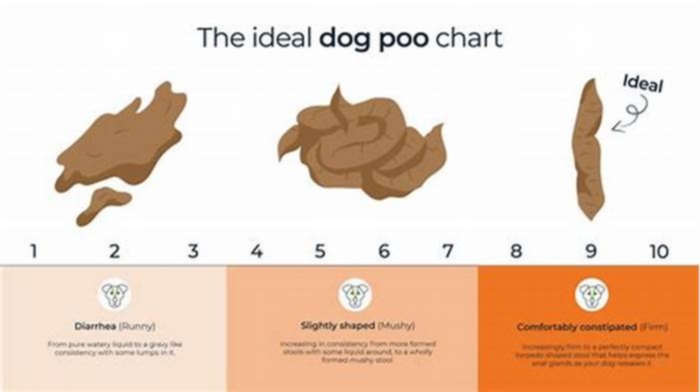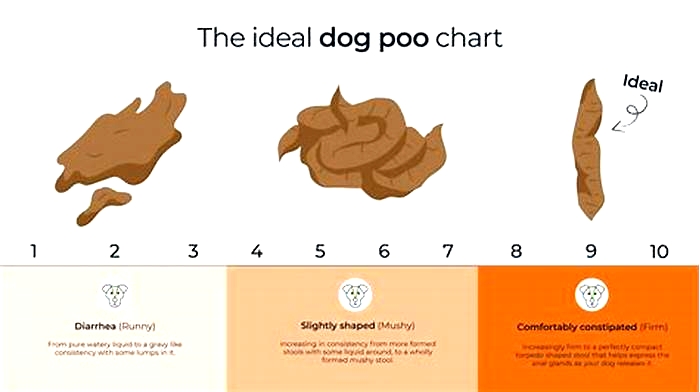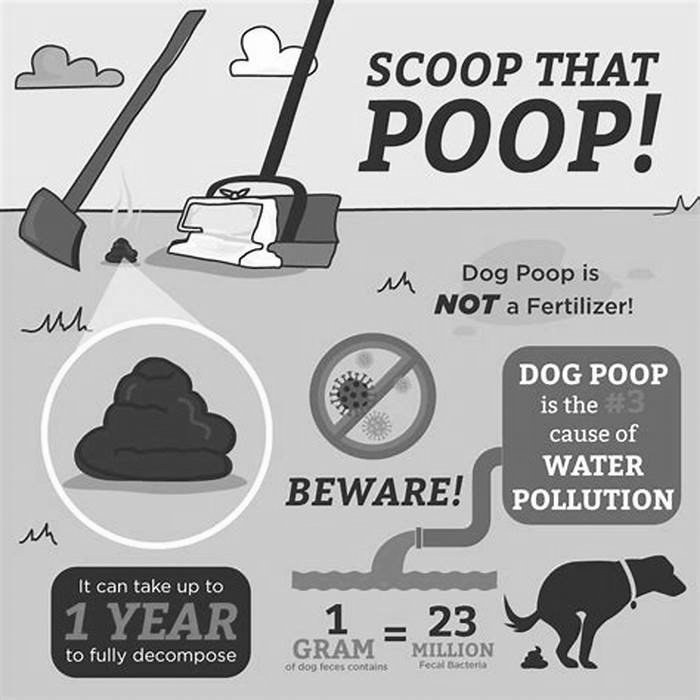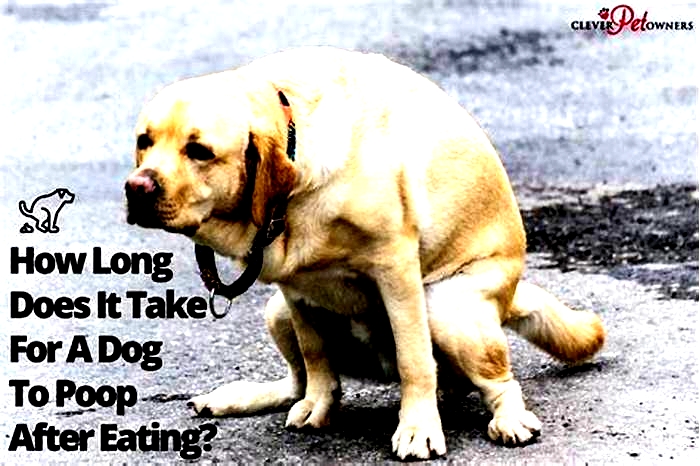How do I change a dog s poop schedule
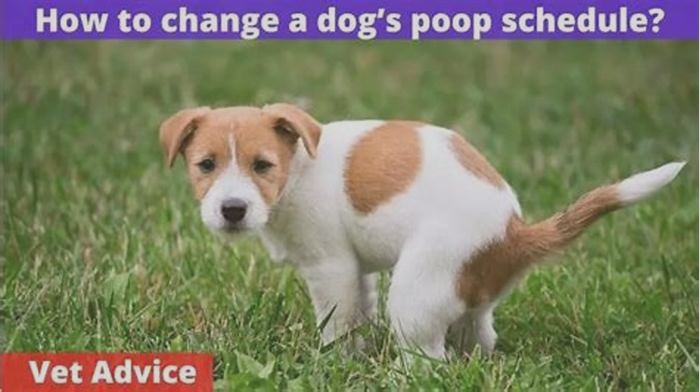
How To Change A Dogs Poop Schedule? [Vet Advice]
Are you a concerned dog owner struggling with your dogs irregular pooping schedule? It would be great if you could change your dogs poop schedule, wouldnt it?
You can modify your dogs pooping pattern through training. This should be a structured process that begins at an early age. You should always consider your dogs behavior and preferences, as well as your daily routine, without disrupting your dogs normal digestive process.
How do you train your dog to a new pooping schedule? What are the potential consequences of this new behavior? How can you overcome them? Lets take a closer look!
How to change a dogs poop schedule?
Are you a dog owner who returns to the house to see a mess your dog made? It is not easy to clean the mess, and sometimes youll get fed up and may think of giving up the dog.
Dont be upset. Dogs are not stubborn. Its just that they are not educated! Here are some simple tricks and methods to train your dog to go outside for fits in your daily routine.
Lemme start by telling you the story of one of my friends.
He has two dogs, Sally and Vindy. Sally has this weird pooping pattern that every day, she poops around 2.30 in the morning.
So they have to wake up every day to take her out. Every day she wakes up and barks at them to signal that she needs to go out, which does not only wake them up but also their neighbors.
Eventually, they followed up this training method that im gonna tell you, and now they are out of all mid midnight waking up troubles.
So 3 simple things should subsequently follow for you to train your dog to go outside on a routine.
- Train them to go outside
- Train them to go outside on a schedule
- Stick to the schedule
1. Train them to go outside
Before you train your dog or your little puppy to go outside routinely, you must be able to train your dog to go outside when he wants to relieve himself.
This is a must-learn habit for your dog cus you cant keep cleaning your dogs mess every single time.
Usually, it is different from a dog to a dog that time ranges between going outside.
If your puppy is a little bit new to your home probably, it will take 1 to 2 hours. If your puppy is well trained, there can be a 3 or 4 hours gap.
If your dog is housetrained and trained for going outside when they are in the home alone, they can wait like 8 or 10 hours after peeing or pooping.
So, in the beginning, you have a tough job to do, keep checking on your dog an hour after an hour. But believe me, it will get easier!
Remember you as a kid? Your mother taught you everything from scratch? This is the same process, only that they take a little more time to learn.
So at first, puppies dont know how to hold. So they are gonna pee or poop in your house as much as they like. So how do you stop this?
Puppies dont give you hints. You have to take them every hour to check if they wanna relieve themselves.
You can simply take them out and command them using a phrase like go potty or go outside.
Right after they relieve themselves, reward your dog with some treats. And also, praise him by saying Good potty or anything that sounds the same.
( You have to use those words consistently, so choose the words wisely)
When you take them out, dont let them play with you, and every time you use the word, go potty. Give your puppy some time, like 5 minutes or 10 minutes.
If hes not going to poop or pee, take him back inside but give no treats like No Roxy! If no outs no ins.
And repeat this process after one hour. Focus on the signals your dog gives before he goes outside.
Do this training method for days, and finally, youll be able to understand the hints of your dogs they give when they wanna go outside.
And also, you can guess the time periods that they wanna go out willingly.
By the way, here is why do some dogs poop multiple times in a row.
2. Train them to go outside on a schedule
Now your dog has successfully trained to go outside. Is it enough? No! Now you have to train your doggo to go outside on a schedule.
First of all, a quick thing to say!
You cant expect your dog to go outside for a schedule if you dont feed them on a schedule. So first, you have to feed them on a routine.
Usually, little puppies need to be fed 2 or 3 times a day. Breakfast, Lunch, and dinner. Then you can let your doggo make his schedule for going outside.
Usually, for most dogs going outside is the first thing to do in the morning, but for some, they save it for later in the day.
You can always bring them out after the major meals and even after a good walk.
You can take your dog outside before you go to work and after you return home. This will probably prevent your house from being as most dogs poop or pee in the house due to separation anxiety.
So how do you train your dog for this method? Its pretty easy.
Always, ALWAYS take your dog outside before you leave home and do the same when you return.
This doesnt mean you have to be out for a longer period, okay? Even though you were out for like 5 min take your dog outside as soon as you return. And praise him with tasty treats.
This will make your doggo think that it is worth the wait to relieve themself after you return home, and they will never poop or pee in your house.
So I mentioned some easiest routines to try for you, but its up to you to come up with a different schedule as it is easy for you and your work.
3. Stick to the schedule
Whatever the schedule you choose, you have to stick to it and repeat it. Dont rush your dog, as it can take different periods for different dogs to learn.
After your dog has got the point, he will come to you as soon as he wanna go outside.
By the way, here is whether dogs can pee and poop at the same time.
What are the possible problems after changing your dogs defecation schedule?
1. Cause digestive tract problems
Your dogs defecation schedule mustnt interrupt his diet pattern. Otherwise, it will affect their natural digestion process and could cause some problematic conditions.
2. Absence of go-to person
After your pet is trained to come to you, he will always look up to you and take him outside. But what if you are not home?
Then your dog might wait for you to come home, and this delay can make them some difficulties.
3. Dehydration
The new schedule can mess up the hydrating pattern of your dog. So keep an eye on your loving poochs water dish whether he takes enough water intake.
By the way, here is whether dogs can poop on the road.
How to overcome post- problems after changing your Dogs pooping schedule?
You should pay the same attention to their feeding schedule as much as you do to their defecation schedule.
Make sure your dog follows the feeding plan you offer them; otherwise, you have to train them. I have talked about this in an earlier article, but Ill explain shortly.
- Place your pets dish in front of them and wait for them to eat.
- Wait until 10 to 15 minutes until he eats
- Take the dish if he hadnt eaten and given nothing to eat to your dog until the next meal
- Repeat this in the next meal.
After several days your dog will learn that he gas to eat in time; otherwise, hell get nothing. Never go to the defecation schedule until your doggo masters the feeding schedule.
Heres some extra tip for you. You can guess that if your dog has some difficult condition, check the nature of your doggos poop.
The normal poop is compact, moist, and doesnt change when picked up. If your pets poo is watery, that can be a result of some intestinal problem.
If the poo is too dry and hard, it can be a result of dehydration. If you have changed the diet, the nature of the poo can be changed.
So if you feel like there is some abnormality in your dogs poop or pooping pattern, go to the vet and get their help.
Suggested Reading: Why does your dog keep pooping on the couch?
Things to be aware of
1. Give your dog the priority
Your dog must be the first duty for you in the morning while doing the housetraining.
You know they are very sensitive and easily sense your ignorance, which may lead your dog to pee in the house.
2. Put a considerable space between each turn
Do not train your dog to poop for short periods. Make sure they get enough time to do the digestive process and make even spaces between each turn.
3. Handle the excitements
If you have visitors in your house, immediately take your dog outside as seeing new faces after a long time can make your dog more excited and cause an accident on the carpet.
4. Keep the eye on their water dish
Whenever you see your dog drinking a considerable amount of water, take him outside as soon as theyve done drinking.
4. Let them relieve themselves after they take a walk or play
After a long walk or playtime with your dog probably get thirsty and will drink a lot of water. And you can take them outside as soon as they have done drinking water.
Conclusion.
You can train your dog to poop/pee outside and on a routine. But the training process must be completed patiently. It is better if you can start training from your dogs puppy age. You should focus on the feeding schedule of your dog before the defecation schedule. Different dogs prefer different times of the day to relieve themselves. So prepare the schedule focusing on the behavior of your dog and your daily workline.
How to Switch & Transition Dog Foods
Maybe your veterinarian has recommended a prescription diet, or perhaps youve simply decided to try a new brand. Whatever the reason for the switch, changing your dogs diet is more complex than simply pouring the new food into a bowl. In order to avoid upsetting your dogs stomach, you will need to transition to the new food the right way. Heres the best way to switch dog foods.
How to Change Your Dogs Food
Switching your dogs food abruptly can cause gastrointestinal upset such as vomiting, diarrhea, and a decreased appetite. Any time you decide to change your dogs food, you should transition to the new diet gradually in order to give your dogs system time to adjust to the change. Ideally, these transitions should happen over 5-7 days. During this transition, you will gradually incorporate more and more of the new food by mixing it with your dogs current diet. For most dogs, a good diet transition will look like this:
- Day 1: 25% new diet and 75% old diet.
- Day 3: 50% new diet and 50% old diet.
- Day 5: 75% new diet and 25% old diet.
- Day 7: 100% new diet.
Some dogs with sensitive stomachs, food allergies, or other gastrointestinal diseases may need an even longer transition period. The key to a good diet transition is monitoring your dogs individual response. If, at any point during the diet transition, your dog displays concerning signs such as changes in appetite, vomiting, or diarrhea, you should proceed more slowly. And if you have transitioned gradually and your dog is still experiencing stomach upset, it is best to consult with your veterinarian. In some cases, it may be necessary to choose a different diet.

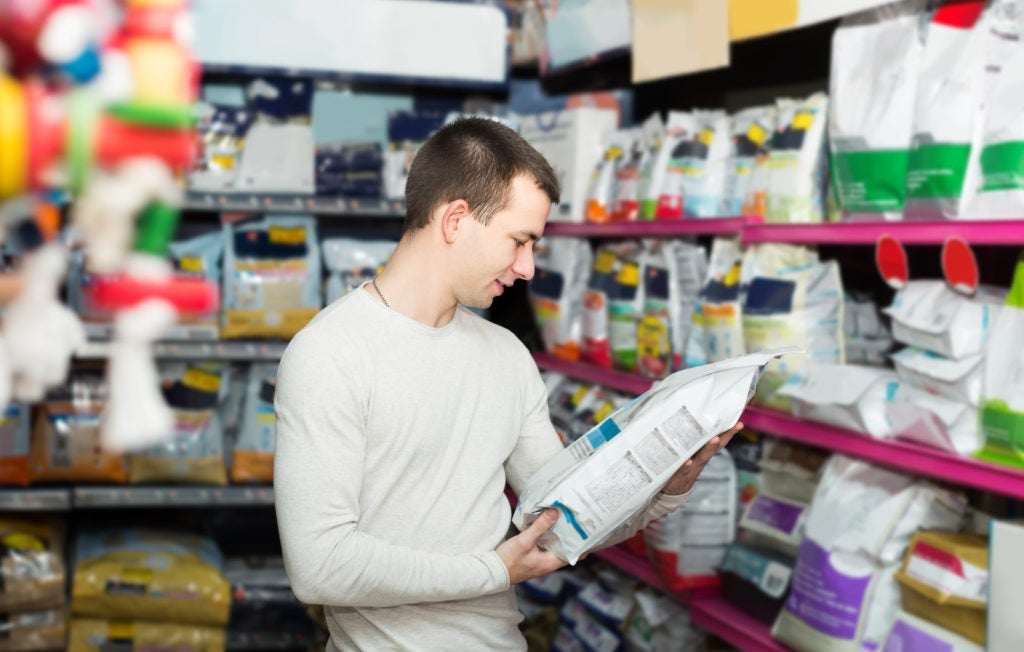
Adverse Food Reactions in Dogs
An adverse food reaction is a blanket term used to describe a number of different food-related illnesses in dogs such as food allergies, food intolerance, and other gastrointestinal diseases. Many people will describe their dogs as having food allergies but this is not always accurate. True allergies involve a very specific response from the dogs immune system and this is not definitively diagnosed in many cases. Thus, it is more accurate to refer to these events as adverse food reactions.
Adverse food reactions can present with gastrointestinal symptoms, cutaneous symptoms, or a combination of the two. Gastrointestinal signs of an adverse food reaction include nausea, vomiting, diarrhea, and changes in appetite. Cutaneous symptoms include a wide range of signs such as itching, skin inflammation, hair loss, and many different types of rashes. There are many other illnesses that can cause similar symptoms, so it is important to have your dog evaluated by your veterinarian if these symptoms occur.
If your veterinarian suspects your dog is having an adverse food reaction, they may recommend performing an elimination diet trial. This means your dog will eat only a prescription hypoallergenic diet and no other food sources for at least eight weeks. If your dogs symptoms resolve during the diet trial, this can be a sign that food was the culprit. At the end of the eight-week trial, your veterinarian may also perform a challenge trial by reintroducing certain foods into your dogs diet to see if they provoke another reaction. The challenge trial can help you and your veterinarian determine exactly which foods are problematic for your dog, so you can avoid them in the future.

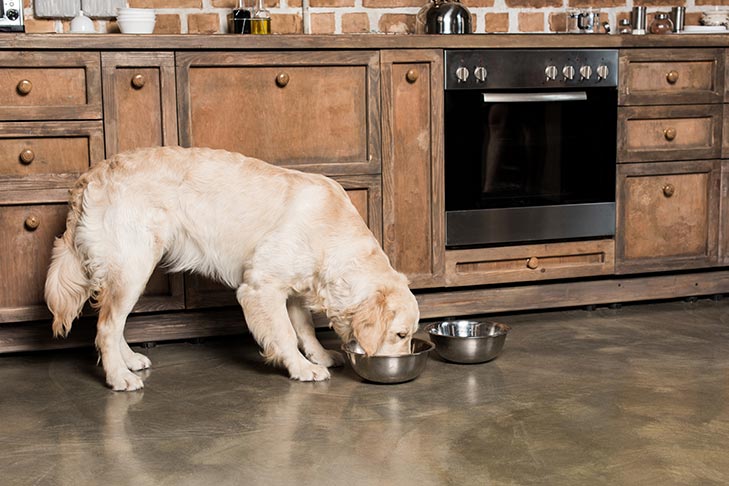
The Proof is in the Poop!
The best way to monitor your dogs digestive health is to pay attention to the quality of the stool. While minor variations in stool color and consistency are normal, any major changes can indicate a problem that needs to be addressed. A great way to evaluate your dogs stool is to use aFecal Scoring Chart. An ideal fecal score is 34. Lower numbers may indicate dehydration or constipation, while higher numbers are indicative ofgastrointestinal upset, which can be due to a variety of factors. If your dogs stool is consistently outside of the normal range, it is recommended that you consult your veterinarian regarding your dogs digestive health.
How to Choose a Dog Food
Choosing an appropriate dietfor your dog is a complicated process. The sheer number of dog food options available is overwhelming. Unfortunately, there is no one diet that is best for every dog. Just like humans, dogs are individuals and their dietary needs vary depending on factors such as age, health, and personal preferences.
To make the process even more complicated, there are also a lot ofmyths about dog foodon the internet. Many people fall victim to advertising campaigns or scare tactics warning them away from commercial dog foods. Fortunately, theWorld Small Animal Veterinary Associationhas published a guide entitled The Savvy Dog Owners Guide: Nutrition on the Internet to help pet owners decipher fact from fiction when doing their own research about dog food.
Learninghow to read a pet food labelcan also help demystify the process of choosing a dog food. The information on a pet food label is guided by theAssociation of American Feed Control Officials (AAFCO). AAFCO is responsible for establishing definitions for many of the terms you will find on a bag of dog food. Understanding theselabeling requirementscan make it easier to identify which products are best for your dog. Look for the words complete and balanced diet on the label.
Findingthe best food for your dogcan be a lengthy process, but with the right tools and a gradual transition, you can ensure the switch is successful. During the transition, be sure to monitor your dogs appetite, behavior, and stool quality to help determine whether the new diet is the right choice for your dog. As always, your veterinarian is your best resource for information regarding your dogs health and nutrition.

